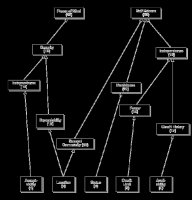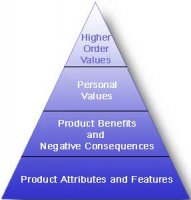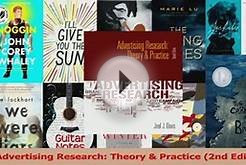 Five questions are critical in marketing communications and the creation of advertising. These are Who (Spokesperson), Says What (Advertising Message), To Whom (Target Audience), How (Which Media Channel), With What Effect (Desired Outcome).
Five questions are critical in marketing communications and the creation of advertising. These are Who (Spokesperson), Says What (Advertising Message), To Whom (Target Audience), How (Which Media Channel), With What Effect (Desired Outcome).
When any advertising research is conducted, we must have in mind the Advertising Effect or desired outcome. If we can determine the Effect, the other answers to the other four questions can be answered.
The Brand Connection
Brands connect products or services to people. This connection is through the meaning that the brand brings into the lives the people that use it. Brands tap into six modes of communication to convey meaning. These modes are instrumental in determining advertising effect:
- Naming
- Wording
- Describing
- Picturing
- Symbolizing
- Animating
The personal benefits and values of the core product are reinforced and strengthened as the brand meaning grows and it becomes more connected to the person. In the language of a brand manager, the result is a high equity brand that is surrounded by loyal customers.
To flesh out a brand design schematic, researchers often integrate means-end research with other forms of marketing / consumer research. Hierarchical Value Maps based on the means-end analysis identify the connection between the brand attributes and the market needs (expressed as personal benefits of brand use and values that are reinforced) and give creative directors a rich set of concepts for producing advertisements.
To sell a product we must “play to strength, ” but often that strength is not valued by people. Our “strength” is a “so what.” The goal of market driven strategies is to change the “so what” into a “WOW.” One way of doing this is to use means-end analysis and hierarchical value maps.
 The following example shows a portion of a hierarchical value map for a bank considering how to position its credit card.
The following example shows a portion of a hierarchical value map for a bank considering how to position its credit card.
The means-end study was used to produce a hierarchical map based on a set of attribute statements that were linked to positive and negative psycho-social consequence statements (benefits).
Higher order value statements were also used in the study and appear at the top of the map. This portion of the hierarchical value map clearly shows two psychological values as key to credit card users: “Peace of Mind” and “Self Esteem.” Peace of mind is a direct result of the card being broadly accepted by merchants and the support locations available. These credit card attributes are seen to link, in turn, to independence, dependability, and security.
The branch of the hierarchical value map dealing with Self Esteem is similarly interpreted through the linked positive benefits and associated attributes.
Matching Hierarchical Value Maps and Means-Ends Analysis with Media Plans Media should be matched to reach and frequency data for the targeted product markets. Many different dimensions should be considered in this decision, including the value structure of the market.
The “Sophisticated, ” “Competent, ” and “In Control” images seen in the media are evidence of the value laden messages that reflect the hierarchical values held by the targeted consumers of many products. Appropriate media choice of Forbes and not National Enquirer further complement these value statements.
The energy drink “Red Bull” paid college students to drive around campus with a huge display can of Red Bull strapped to the roof of their car. Many college students watch TV infrequently and TV ads are only used to remind the targeted younger audience of product benefits.
Means-Ends Analysis and the associated Hierarchical Values Maps can be developed through online survey research methods. Measuring Advertising Effectiveness with Online Surveys using HVM and Means-Ends Analysis.









